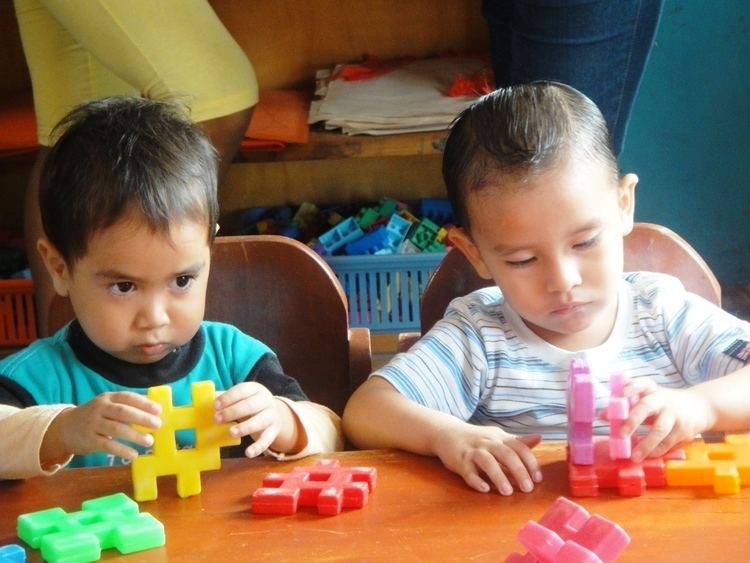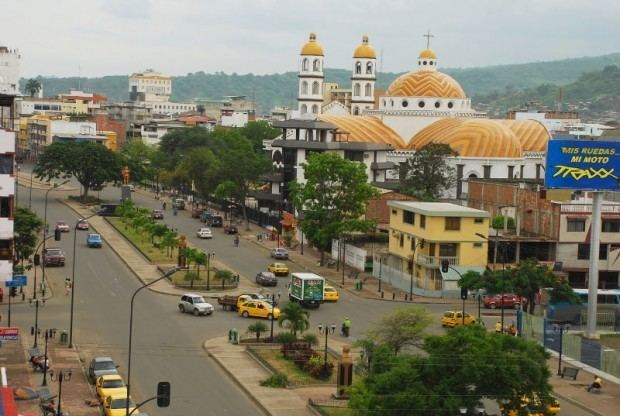Country Population 206,682 (2010) Area 418.06 km2 Mayor Humberto Guillen Murillo | Elevation 53 m Founded Francisco Pacheco | |
 | ||
University University San Gregorio de Portoviejo | ||
Map of Portoviejo
Portoviejo ([poɾtoˈβjexo], [poɾtoˈβjeho]) is a city in Ecuador, and the capital the Province of Manabí 30 kilometres (19 miles) from the Pacific coast. (Population: about 250,000). Also known as the city of the "Royal Tamarind Trees" for the beautiful trees found in the area. Portoviejo is the main political and economical centre of the Portoviejo River valley, which also includes the cantons of Santa Ana and Rocafuerte, where about 110 square kilometres (42 square miles) are cultivated every year. The valley is rich in the production of tomatoes, onions, peppers, bananas, mangoes and other tropical fruits. The city, which was affected by economic crisis in the eighties and nineties, is now recovering but severe budget limitations and a huge unemployment rate present difficulties for local authorities. Portoviejo is a large commercial center for the province, where there are two shopping malls, one with a large hypermarket, 8 movie theaters, food court, and other stores. There is a large flea market in downtown. Locals are very friendly and very well educated. The city is home of the cancer treatment hospital "Dr Julio Villacreses Colmont" serving the provinces of Manabí and Esmeraldas. Portoviejo is the perfect place to enjoy traditional Manabí cuisine, of great fame in Ecuador, usually at countryside restaurants located on the side of the Portoviejo-Crucita roadway. The local airport is used for domestic flights.
Contents
- Map of Portoviejo
- Portoviejo ecuador 6th largest city in ecuador
- Axel skater de 9 anos de portoviejo sus primeros trucos
- History
- Gastronomy
- Tourism
- References

This large city is the capital of Manabí Province and is important for coffee, cattle and fishing. Founded on March 12, 1535, it is one of the oldest cities in Ecuador and is the sixth largest.

Portoviejo has a thriving agricultural-processing industry and is an important commercial center, with good road connections to Quito and Guayaquil.
This city houses close to 200,000 inhabitants and is the capital of Manabi province as well as the main center for commercial activity such as coffee production, fishing and cattle ranching. It is also famous for kapok mattresses and pillows made from the ceibo seed case and is a good place to buy hammocks. You can stroll around the city easily by foot and visit the Parque Eloy Alfaro which faces the local cathedral. An interesting nearby village to visit is Sosote just a few minutes from Portoviejo, it's worth visiting because of its tagua workshops. The main street has several stalls selling tagua figures.
Portoviejo ecuador 6th largest city in ecuador
Axel skater de 9 anos de portoviejo sus primeros trucos
History
Founded March 12, 1535 by the Spanish captain Francisco Pacheco as "Villa Nueva de San Gregorio de Portoviejo".
One of the greatest poets to come from Portoviejo was Vicente Amador Flor, who wrote many poems about the city.
Sandra Vinces Miss Ecuador 2009 was born in this city.
On April 16 and 17, 2016, a large earthquake struck the region. Portoviejo sustained fatalities and building damage.
Gastronomy
It has one of the richest and most varied cuisines in the country, and thus also Manabí is the most important province when it comes to gastronomy. Typical meals are: - Viche Fish or shrimp - Corviche - Bolones de verde (with cheese or mixed) - encebollado - Ceviche - Braised Chicken - Broth of hen - rice with breaded fish - rice with shrimp - Cangrejada - White Serum or curd - among others.
Tourism
Being in the Ecuadorian coast Portoviejo has many attractions inside and outside the city, one of them is the Crucita Beach that along with the Mangrove La Boca conform the coastal profile of this canton. Crucita is recognized worldwide as a great place for the practice of paragliding. Also as part of the rural area is the Enchanted Lagoon located in the parish of San Placido. Changing location towards the city, we find the Mamey Ecological Park (much visited by athletes and children) located beside the River Portoviejo, the UTM park and Botanical Garden is the largest park in the city and it also has a large animal reserve, The Forest Park is located in the north of the city and is the busiest, and finally the Central Park Vicente Amador Flor, whose interior is full of history. The Cerro Jaboncillo archeological complex is a large complex with an archeological site and museum that exposes the history of the ancestors that inhabited the southern part of Manabí Province before the Spanish colonization.
